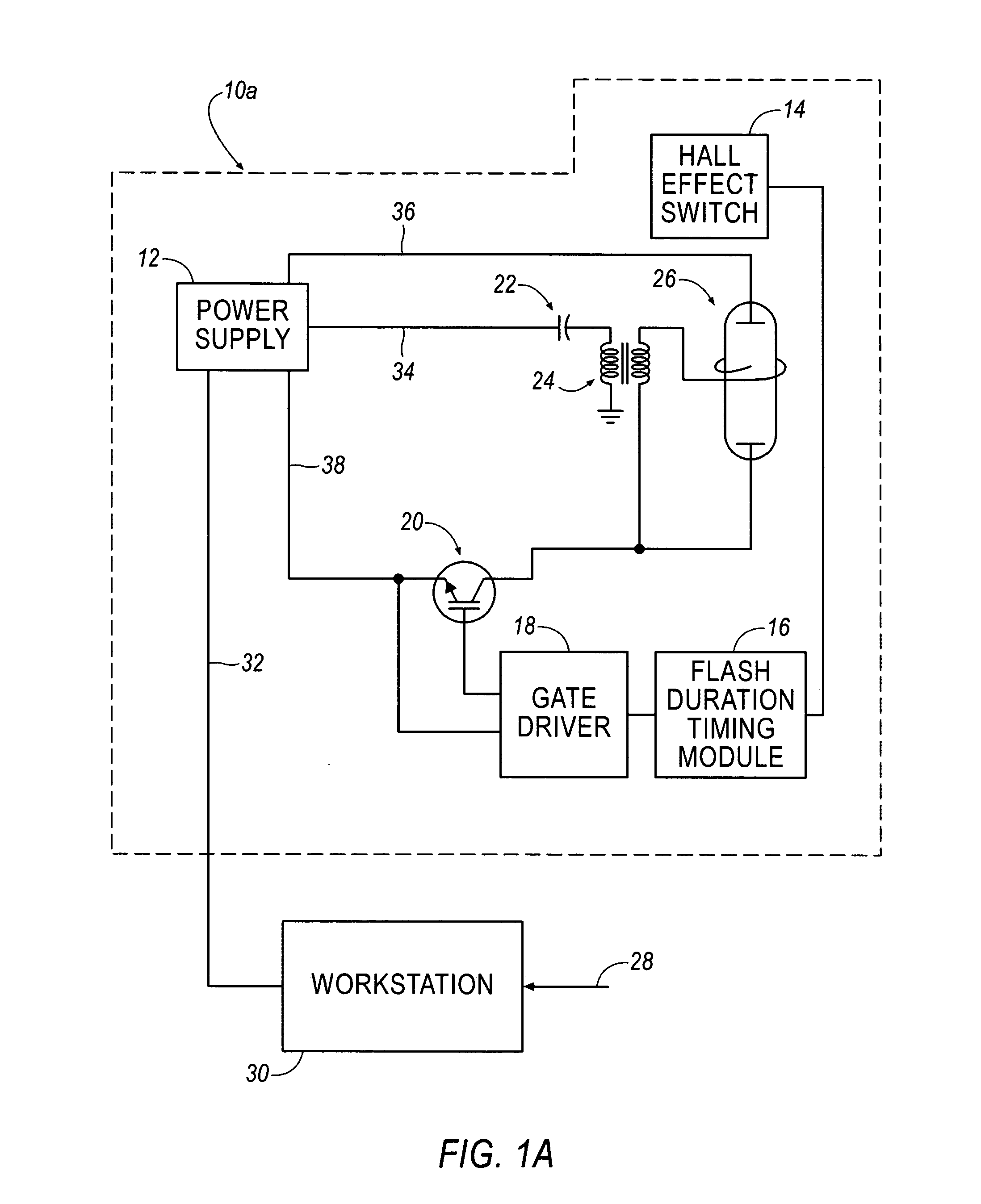Method and apparatus for thermographic imaging using flash pulse truncation
a thermographic imaging and pulse truncation technology, applied in the field of pulse thermography, can solve the problems of less practical lasers when used to instantaneously heat a large area, the actual spatial temperature distribution at the sample surface may be quite non-uniform, and the surface immediately above the defect to cool at a different rate, so as to achieve the effect of high speed capability and precise control of flash timing characteristics
- Summary
- Abstract
- Description
- Claims
- Application Information
AI Technical Summary
Benefits of technology
Problems solved by technology
Method used
Image
Examples
Embodiment Construction
[0036]Referring to FIGS. 1A and 1B, an add-on pulse controller device is shown generally at 10a and 10b, respectively. As illustrated, the pulse controller device 10a is arranged in a series configuration, and the pulse controller device 10b is arranged in a parallel configuration. Each pulse controller device 10a, 10b is arranged to include a power supply 12, a Hall effect switch 14, a flash duration timing module 16, a gate driver 18, an Insulated Gate Bipolar Transistor (IGBT) 20, a power supply capacitor 22, a trigger transformer 24, and a flashtube 26.
[0037]As illustrated, a video synchronize signal 28 is fed into a workstation 30, such as a personal computer, that drives the power supply 12. In operation, when the workstation 30 issues a control signal over path 32 to the power supply 12, the power supply 12 issues a trigger pulse output signal (e.g. a 250 volt capacitive discharge pulse) over path 34 to the power supply capacitor bank 22, which excites the trigger transformer...
PUM
| Property | Measurement | Unit |
|---|---|---|
| duration of time | aaaaa | aaaaa |
| duration of time | aaaaa | aaaaa |
| electrical power | aaaaa | aaaaa |
Abstract
Description
Claims
Application Information
 Login to View More
Login to View More - R&D
- Intellectual Property
- Life Sciences
- Materials
- Tech Scout
- Unparalleled Data Quality
- Higher Quality Content
- 60% Fewer Hallucinations
Browse by: Latest US Patents, China's latest patents, Technical Efficacy Thesaurus, Application Domain, Technology Topic, Popular Technical Reports.
© 2025 PatSnap. All rights reserved.Legal|Privacy policy|Modern Slavery Act Transparency Statement|Sitemap|About US| Contact US: help@patsnap.com



